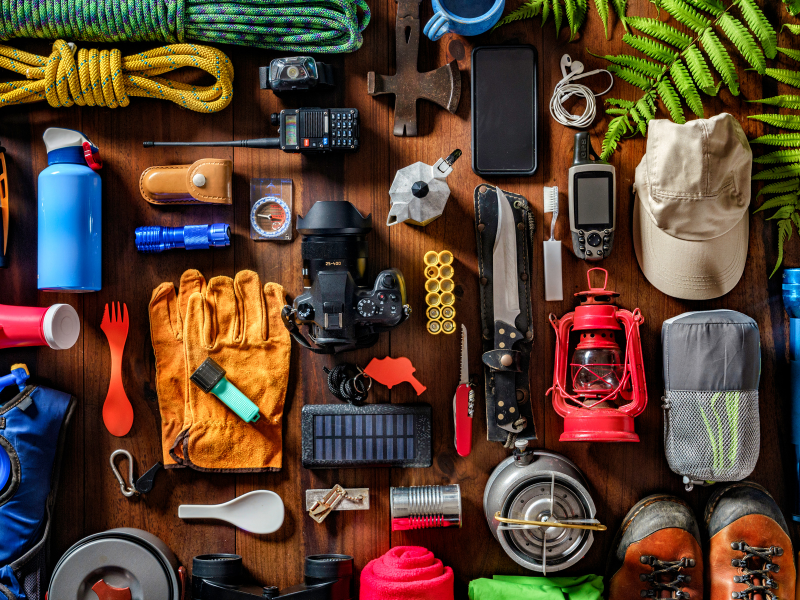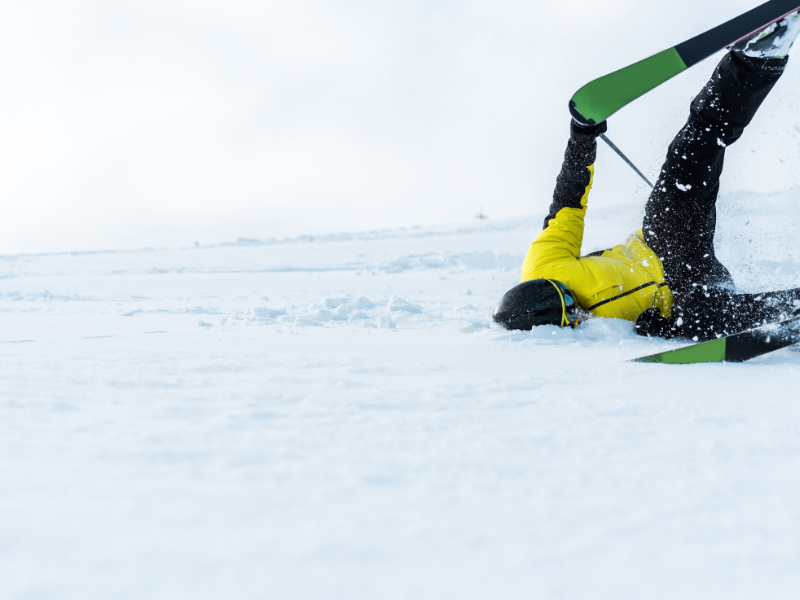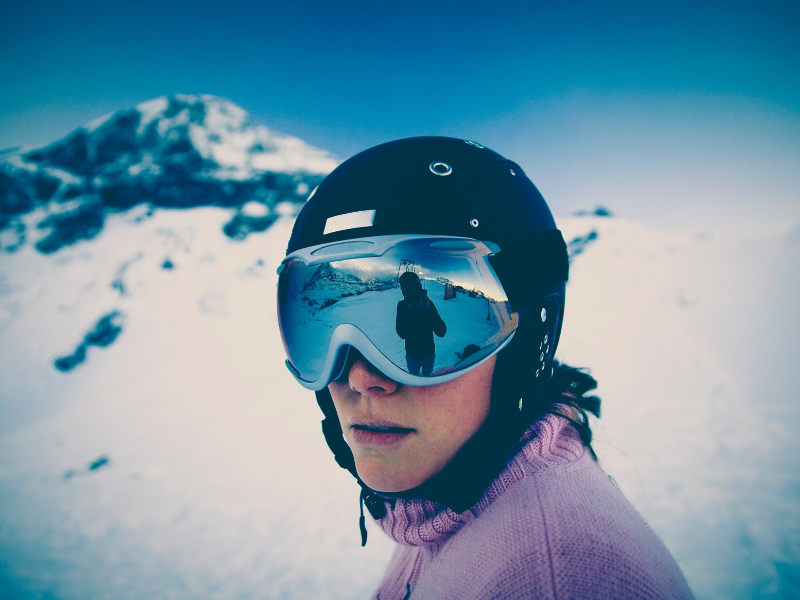Hiking is a fantastic way to burn calories, reduce your screen time, and explore the beauty of the outdoors. Adventure is calling and you’re ready to answer the call, but how do you successfully prepare for a hike?
To prepare for a hike, you must do the following:
- Choose a suitable backpack
- Bring the right clothes + gear
- Carry adequate food + water
- Bring navigation tools
- Carry safety items
- Pack a first-aid kit
This guide will fully prepare you on what to bring, so you can explore more of the world on your own two feet. Whether you want to reach a hiking summit or just experience the endorphins of good exercise, we’ll provide you with plenty of handy information ahead!
Check out Kenver's extensive selection of hiking gear:
Kenver's Hiking Collection
Preparing for a Hike – Here’s What to Do
Choose a Suitable Backpack
Not all hiking backpacks are created equal. Forget about brand and aesthetics for a second, when picking a backpack for the journey ahead, you'll need to focus on the frame.
It's closely tied to how much you can carry, your level of comfort on the hike, and to a certain degree, the type of hiking you can do.
Your options include external-frame, internal-frame, and frameless packs.
Here’s what you need to know about all three.
1. External-Frame Hiking Backpacks
Beginning with external-frame backpacks, these hiking packs feature a rigid construction.
Comprised of a hip belt and shoulder strap system known as the harness as well as a pack, the whole backpack is held together via an aluminum frame.
Its aluminum frame increases the backpack's external storage capacity to at least 50 liters (this will vary by model, of course).
They’re also more adjustable than they appear, so if you have younger or shorter hikers in your party, they can customize the fit of the backpack for them.
If you have a large and heavy load especially, external-frame hiking backpacks are a must. However, external-frame backpacks are bulky, burly, and not conducive for use for many hours at a time.
2. Internal-Frame Hiking Backpacks
The opposite of external-frame packs, an internal-frame hiking backpack is a lighter alternative.
Although some internal-frame packs are rigid, it’s not nearly to the same degree as an external-frame backpack.
An internal-frame hiking backpack features a plastic framesheet or an aluminum rod that’s positioned vertically from the top of the pack to the bottom.
The framesheet helps shift some of the weight to your hip belt, which spreads the weight distribution so your shoulders don’t bear the brunt of your weight.
You might be able to take out the framesheet or rod, which would make an internal-frame backpack less rigid.
If you're planning on scrambling or want a pack that keeps closer to your body and allows for a longer hike than an external-frame, the internal-frame is a good option. The downside though its carrying capacity usually taps out at 40 liters.
3. Frameless Hiking Backpacks
The third type of hiking pack we’ll look at is a frameless backpack, which weighs the least and offers the highest degree of flexibility.
You won’t find any plastic or aluminum components here, which is certainly an upside.
That said, the hip belt fails to distribute your weight as well as an internal-frame backpack, which you may certainly feel in the worst way.
You also can’t exceed 40 liters in a frameless pack nor carry very bulky items. For daytime hikes, these bags suffice just fine.
If you're headed out for a challenging hike where movement is important, and you don't need a ton of supplies, this is a solid choice.
When selecting a backpack, keep your comfort and the carrying capacity top of mind!
Bring the Right Clothes and Gear
On a hike, your clothes and gear are everything.
The right gear will wick away moisture, help regulate temperature (stay warm/cool), and fit you comfortably so you don’t have to stop and change your clothes every few minutes.
What you’ll wear will vary based on the forecast and season in your area. But at the very least, expect to pack the following gear:
- Wool or synthetic socks
- Hiking shoes or boots (make sure they are broken in too)
- Lightweight jacket or fleece
- Long-sleeved shirts (even in the summer, long sleeves ward off bugs and sunburn)
- Quick-drying shorts and pants
- Moisture-wicking base layer t-shirt
- Moisture-wicking underwear (an oft-overlooked piece of clothing!)
- A broad brimmed hat or gaiter - incredibly important if it's sunny
When shopping for hiking-appropriate clothes, you'll have a ton of options, but some of the best materials to look for include merino wool and recycled polyester.
These materials are known for rarely wrinkling (so you can re-wear them if needed), wicking away sweat, and drying fast.
Plus, recycled polyester gives a second life to plastic water bottles without having to create new polyester - and it performs just as well as regular polyester.
Merino wool, which is as soft as butter, also has the benefit of offering thermoregulating properties.
In the summer, the vapors from your sweat are carried away from the garment so you stay cooler. Then, in the winter, the vapors are held closer to your body to retain more heat and keep you toasty.
Speaking of staying toasty, if the weather turns cold or rainy, you'll want to have the following:
- Knitted hat
- Mittens or gloves
- Fleece pants
- Insulating vest or jacket
- Long underwear, long johns, or thermal leggings
- Rain jacket
- Rainboots
Carry Adequate Food + Water
Once you're on the trail, your options are going to be super limited for food and water. Planning for this part of the hike is critical.
How Much Food and Water Should You Bring on a Hike?
For hiking trips, it's recommended that each member of a party brings two pounds of food per day and half a liter of water for each hour. This recommendation is for moderate temperatures and moderate activity levels.
This regimen allows you to consume about 3,500 calories for the day, which is between 21 and 25 calories per pound of the average body weight.
The typical prescribed daily allotment of calories is usually only 2,000 a day, but since you’re expending more energy and burning calories at an elevated rate when hiking, it makes sense to tack on an additional 1,500 calories.
As for water, if it’s a hot and humid day or you’re hiking especially strenuously, then you will need to consume even more water - so you'll need to plan for more than half a liter of water per hour.
For that reason, it’s always better to bring more water than you think you’ll need.
Even if you don’t drink all the water you brought for today, that’s okay. There’s always more for tomorrow.
These food and water recommendations are for each day of hiking.
If you only have a day trip planned for about six hours, then you need two pounds of food and three liters of water (but bring maybe five liters in case it’s hot or someone in the party is extra thirsty).
It’s when you get into multi-day hikes that you’ll really have to dedicate a good amount of backpack space to carrying food and water. At that point, you’d need an internal-frame or an external-frame backpack rather than a frameless pack.
Unless you're incredibly resourceful or daring, there's no alternative to bringing the right amount of food. But if you have a water filtration system, you might be able to take water found from nearby rivers and streams and make it potable.
This will reduce how much water you need to carry on your person.
Bring Navigation Tools
You probably rely on your smartphone for everything these days, from points of interest and directions on how to get there.
Well, out in the wilderness, you may not have that same luxury. There are GPS apps that could be an option, but something more reliable may be needed.
You’ll have to use old-fashioned navigation tools to find your way such as a compass and a map. Don't worry, it's not as crazy as it may seem.
Here's a 2-minute clip that hopefully demystifies a map and compass for you.
For those who cannot eschew technology when on a hike, a battery-powered GPS will also help you navigate.
Carry Safety Items
Even if you’re hiking at a well-known national park or a popular campsite, it’s always better to be safe than sorry when it comes to safety, and dedicating at least a little room in your backpack for safety items is best.
This doesn't always come in the form of self-defense - even items that keep you safe from the elements need to be factored in here as well.
So what kind of safety items do you need? Let’s go over them now.
- Sunscreen with a sun protection factor (SPF) of at least 15
- Multi-purpose knife or tool for cutting bandages, fabric, ropes, or anything else
- Whistle for alerting others over a long distance that you need help
- Flashlight and some extra batteries
- Firestarter if you can’t manually get a fire going yourself
- Bug spray for warding off mosquitoes, spiders, bees, and ticks
- Space blanket, or some sort of material that can serve as an emergency shelter
Pack a First-Aid Kit
Last but certainly not least, at least one member of your hiking party must have a first-aid kit. The kit should be packed to the gills with essentials for treating injuries and preventing infections.
Here’s what to add to your kit:
- Tweezers
- Triangular bandages (two)
- Non-glass and non-mercury oral thermometer
- 3x3 sterile gauze pads (five)
- 4x4 sterile gauze pads (five)
- 3-inch roller bandage (one)
- 4-inch roller bandage (one)
- Hydrocortisone ointment packets (two)
- Cold compress
- One-way valve breathing barrier
- Emergency blanket
- 81-milligram packets of aspirin (two)
- Antiseptic wipes (five)
- Antibiotic ointment packs (five)
- 10-yard by 1-inch adhesive cloth tape
- Adhesive bandages in various sizes (25)
- 5x9 absorbent compress dressings (two)
What Is the Most Important Thing to Do Before Hiking?
Now that you have what you need, you’re preparing to embark on your hike. So what now? What's the most important thing you should be doing?
Well, it's not just one thing - there are several important details that you'll need to dig into. Here’s what we recommend.
Check the Weather
You should always bring rain gear just in case, but it’s never your goal to get caught in a storm.
You want to plan your hike around calm, temperate days. Ideally, the weather should be sunny, clear, and not too warm or humid.
Weather predictions are very fluid, so don’t just check the weather a week before your trip. Monitor the forecast in the days leading up to the hike.
Plan a backup stretch of hiking days in case your first days get rained out or even snowed out.
Double-Check the Contents of Your Bag
Do you know that feeling of leaving your house and realizing you forgot your wallet or phone? It’s not fun!
At least you can quickly turn back around and get what you need. When you’re hiking, it’s not that easy.
Before you head out, double-check that you packed everything on your list. You might even triple-check if you want to be ultra-cautious.
Let Someone Know Where You’re Going
One of the most important things you can do ahead of your hike let someone in on your travel plans.
Give them the name of the campground or park, the address, or at least the rough location of where you'll be in the park and for how long.
If you don’t return on the day that you said you would, this friend or family member can notify the authorities. It might seem like overkill, but in the rare instance that this would happen, having a plan like this in place could be a matter of survival.
How Do Beginners Prepare for Hiking?
Are you planning your first hike? That's exciting - but as you may have figured out, a hike requires prep, and for a beginner, it might require extra prep work. These tips will prepare you accordingly.
Select a Safe Trail That Matches Your Skill Level
As much as you might wish to hike the Mount Everest of your destination, the time for that will come.
Beginners should start with shorter and easier hiking trails to find their sea legs, so to speak. Although these trails maybe aren’t as exciting, you’re building valuable experience for each one you hike. Keep that in mind as you go.
Keep It Short
A weekend of camping might be okay for beginners, but a five-day hike? It’s a little out of your wheelhouse until you gain more experience.
You’re best off beginning with day trips and then going home at night and sleeping in your own bed.
Once you get used to the physical rigors of hiking all day, you can stay overnight one night, then gradually two nights, and more nights from there.
Don’t rush and be sure to enjoy every part of the experience!
Travel Light
Since your first hiking trip will be short, there’s no need to pack too much.
It’s a good idea to bring an extra pair of clothes as well as an extra day’s worth of food and water just in case.
That said, you needn’t carry a whole week’s worth of gear for 24 hours of hiking. If you do pack heavy, you'll only make the hike more strenuous than it needs to be.
Hydrate Often
Although the amount of water you’ve packed is allocated by the hour, that doesn’t mean you can only drink a half-liter of water per 60 minutes.
If you need more water than that, then, by all means, drink more water! You packed more than you need, so hydrate as often as you must so you feel comfortable hiking.
Your body should control how much and when you drink water, not a checklist. Which is the perfect segue to the final tip for beginners.
Listen to Your Body
Hiking isn’t about pushing your body past its point of comfort. Hiking is about being attuned to your body.
When you feel winded, take a break. When your body aches, it might be best to try another activity. When you're hungry, eat.
This is especially important for beginners because you might not know your limits yet. That’s why it’s essential to listen to what your body is telling you.
There are few things worse than struggling for breath on an incline, with a backpack on, and completely missing out on the beautiful experience surrounding you. If you want to avoid that, definitely consider training your body before the hike.
Check out Kenver's short guide on how to prep your body 8 weeks before your hike, you'll find 6 ways to get ahead of this and hopefully train your body and mind for the hike ahead.
And That's How You Get Ready for a Hike
One of the biggest pieces to preparing for a hike is having the right supplies and gear, and a properly sized pack to carry it all. Now that you know what to bring and how much, you can enjoy hiking to the fullest!
Check out Kenver's extensive selection of hiking gear:
Kenver's Hiking Collection



